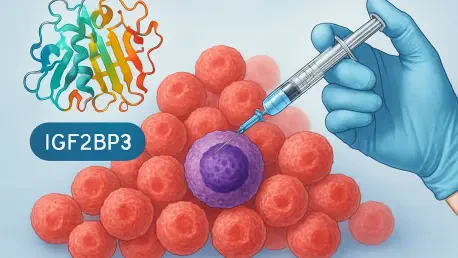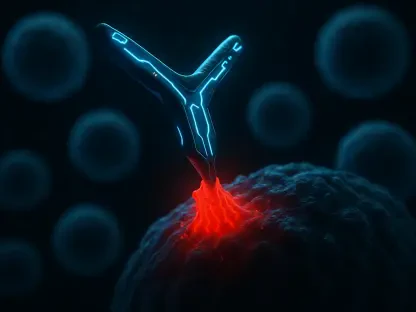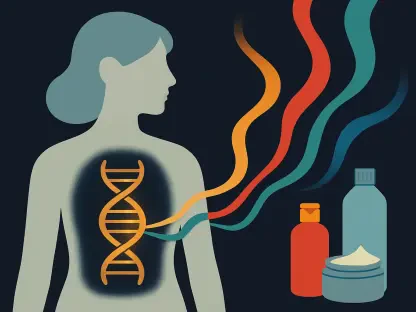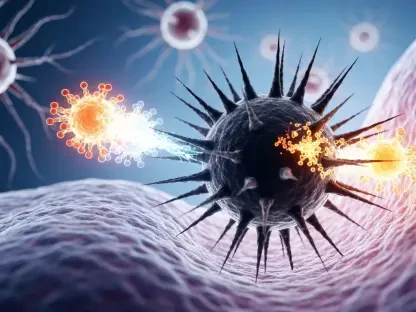Imagine a world where a single protein could unlock the secrets to halting leukemia, a devastating blood cancer that claims countless lives each year, and bring hope to millions through groundbreaking advancements. This is not a distant dream but a tangible possibility with the discovery of IGF2BP3, an RNA-binding protein that has emerged as a critical driver in cancer cell survival. Recent advancements in understanding this protein’s dual role in metabolism and gene regulation have positioned it as a potential linchpin for innovative cancer therapies. This review delves into the cutting-edge technology surrounding IGF2BP3 research, exploring how it could transform treatment approaches for leukemia and beyond, while addressing the challenges that lie ahead in harnessing its full potential.
Unveiling the Power of IGF2BP3 in Cancer Biology
At the heart of leukemia research lies IGF2BP3, a protein once thought to be active only during early human development but now recognized for its reactivation in aggressive cancers. This RNA-binding protein serves as a master regulator, orchestrating cellular processes that enable cancer cells to thrive under hostile conditions. Its significance stems from bridging two previously disconnected domains—cellular metabolism and RNA modification—offering a unique window into the mechanisms of cancer progression.
The technology to study IGF2BP3 has advanced rapidly, leveraging sophisticated tools like the Seahorse assay to measure energy usage in cells. These innovations have revealed how the protein manipulates cancer cell behavior, making it a focal point for developing targeted therapies. As researchers continue to map its influence, IGF2BP3 stands out as a promising candidate for reshaping oncology through precision medicine.
Analyzing IGF2BP3’s Technological Features and Performance
Metabolic Manipulation: Fueling Cancer Growth
One of the standout features of IGF2BP3 is its ability to rewire cellular metabolism, specifically by enhancing glycolysis, a process cancer cells rely on for rapid growth. This metabolic shift prioritizes the production of molecular building blocks over energy efficiency, ensuring leukemia cells have the raw materials needed for unchecked proliferation. Advanced analytical tools have demonstrated that without IGF2BP3, glycolysis plummets, severely impairing cancer cell survival.
This metabolic control is not just a passive trait but a dynamic mechanism that can be targeted. Experimental data shows that disrupting IGF2BP3’s influence on energy pathways could starve cancer cells of essential resources. Such findings highlight the protein’s potential as a therapeutic target, with technology now focusing on inhibitors that could block this metabolic advantage.
RNA Regulation: Fine-Tuning Cancer Survival
Beyond metabolism, IGF2BP3 exerts profound control over RNA modifications, particularly through its impact on S-adenosyl methionine (SAM) levels, a key molecule for RNA methylation. This process is crucial for regulating gene expression, ensuring the production of proteins vital for leukemia cell growth. Research technology has pinpointed that a lack of IGF2BP3 leads to diminished SAM levels, disrupting RNA tagging and ultimately stalling cancer progression.
The precision with which IGF2BP3 manages RNA control underscores its role as a central hub in cancer biology. Cutting-edge genetic models have validated these effects, showing that reintroducing the protein restores RNA modifications and cancer cell viability. This dual functionality—metabolism and RNA regulation—positions IGF2BP3 as a uniquely challenging yet rewarding target for therapeutic innovation.
Broader Applications Across Cancer Types
The versatility of IGF2BP3 technology extends beyond leukemia, with potential implications for other malignancies such as brain tumors, sarcomas, and breast cancer. Its mechanisms of metabolic and RNA control appear to be a shared strategy among various cancer types, suggesting that diagnostic tools targeting IGF2BP3 could serve as biomarkers to identify tumors reliant on similar pathways. This cross-cancer applicability enhances the protein’s value in the broader oncology landscape.
Technological advancements in mapping IGF2BP3’s expression across different cancers are underway, with the aim of tailoring treatments based on its presence. Such developments could pave the way for universal diagnostic platforms, allowing clinicians to detect and target cancers with greater accuracy. The adaptability of this technology signals a shift toward more integrated cancer care strategies.
Challenges in Harnessing IGF2BP3 Technology
Despite its promise, the path to translating IGF2BP3 research into viable therapies is fraught with obstacles. Developing inhibitors that specifically target this protein without affecting healthy cells remains a significant technical hurdle. Off-target effects and the risk of toxicity pose real concerns, as current technologies struggle to achieve the necessary precision for clinical use.
Additionally, variability in how IGF2BP3 operates across different cancer types and individual patients complicates therapeutic design. While some leukemia subtypes show heavy reliance on this protein, others may have alternative survival mechanisms, reducing treatment efficacy. Overcoming these barriers will require sustained investment in refining drug delivery systems and personalizing approaches based on tumor profiles.
Verdict on IGF2BP3’s Role in Cancer Treatment
Looking back, the exploration of IGF2BP3 as a therapeutic target revealed a groundbreaking intersection of metabolism and RNA control in leukemia and potentially other cancers. Its ability to drive cancer cell survival through dual mechanisms stood out as both a challenge and an opportunity for medical technology. The performance of tools like the Seahorse assay and genetic models provided robust evidence of the protein’s impact, setting a strong foundation for further development.
Moving forward, the next steps must focus on creating specific inhibitors that can safely disrupt IGF2BP3’s functions without unintended consequences. Collaborative efforts between researchers and pharmaceutical innovators should prioritize clinical trials to test multi-pronged therapies combining IGF2BP3 blockers with metabolic disruptors. Additionally, expanding diagnostic capabilities to detect IGF2BP3 expression across diverse cancers could guide more tailored treatment plans, ultimately pushing the boundaries of personalized medicine in oncology.









